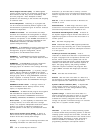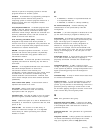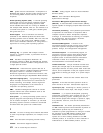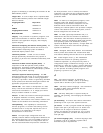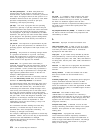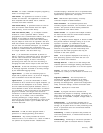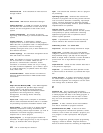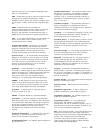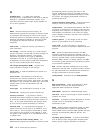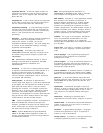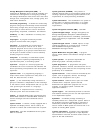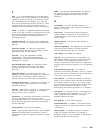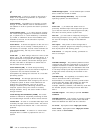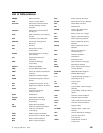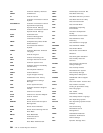Q
qualified name. (1) A data name explicitly
accompanied by a specification of the class to which it
belongs in a specified classification system. (2) A
name that has been made unique by the addition of
one or more qualifiers.
R
RACF. Resource Access Control Facility. An
IBM-licensed program that provides for access control
by identifying and verifying the users to the system,
authorizing access to protected resources, logging the
detected unauthorized attempts to enter the system,
and logging the detected accesses to protected
resources.
read access. In computer security, permission to
read information.
real storage. The main storage in a virtual storage
system. Physically, real storage and main storage are
identical. Conceptually however, real storage
represents only part of the range of addresses
available to the user of a virtual storage system.
Traditionally, the total range of addresses available to
the user was provided by the main storage.
real storage management (RSM). Routines that
control allocation of pages in real storage.
reason code. A code that identifies the reason for a
detected error.
record format. The definition of how data are
structured in the records contained in a file. The
definition includes record name, field names, and field
descriptions, such as length and data type. The record
formats used in a file are contained in the file
description.
record type. The classification of records in a file.
recorder file. Synonym for system recorder file.
recovery procedure. (1) A process in which a
specified data station attempts to resolve conflicting
or erroneous conditions arising during the transfer of
data. (2) An action performed by the operator when
an error occurs to permit processing to continue.
reserved word. (1) In programming languages, a
keyword that may not be used as an identifier. (2) A
word used in a source program to describe an action
to be taken by the program or the compiler. It must
not appear in the program as a user-defined name or
a system name.
Resource Access Control Facility (RACF). An
IBM-licensed program that provides for access control
by identifying and by verifying the users to the
system, authorizing access to protected resources,
logging the detected unauthorized attempts to enter
the system, and logging the detected accesses to
protected resources.
resource definition online (RDO). A CICS interactive
facility to create and modify system resources.
response time. The elapsed time between the end of
an inquiry or demand on a computer system and the
beginning of the response; for example, the length of
time between an indication of the end of an inquiry
and the display of the first character of the response
at a user terminal.
retention period. (1) The length of time for which
data on a data medium is to be preserved.
return code. A value returned to a program to
indicate the results of an operation requested by that
program.
RMF. Resource Measurement Facility. An IBM
licensed program that measures selected areas of
system activity and presents the data collected in the
format of printed reports, system management
facilities (SMF) records, or display reports. Use RMF
to evaluate system performance and identify reasons
for performance problems.
RJE. Remote Job Entry. Submission of job control
statements and data from a remote terminal, causing
the jobs described to be scheduled and executed as
though encountered in the input stream.
rolling window. Synonymous with sliding window.
S
SAA environments. Those environments in which
IBM intends to provide full implementation of
applicable SAA architectural elements.
SAM-VSAM. SAM files in VSAM-managed space.
save area. Area of main storage in which contents of
registers are saved.
scheduler. A computer program designed to perform
functions such as scheduling, initiation, and
termination of jobs.
SDSF. System Display and Search Facility. An IBM
licensed program that or element of OS/390 that
allows TSO/E users to browse JES2 spooled data sets,
and view and manipulate JES2 job queues, and
devices.
secondary space allocation. In systems with VSAM,
area of direct access storage space allocated after
primary space originally allocated is exhausted.
578 VSE to OS/390 Migration Workbook



